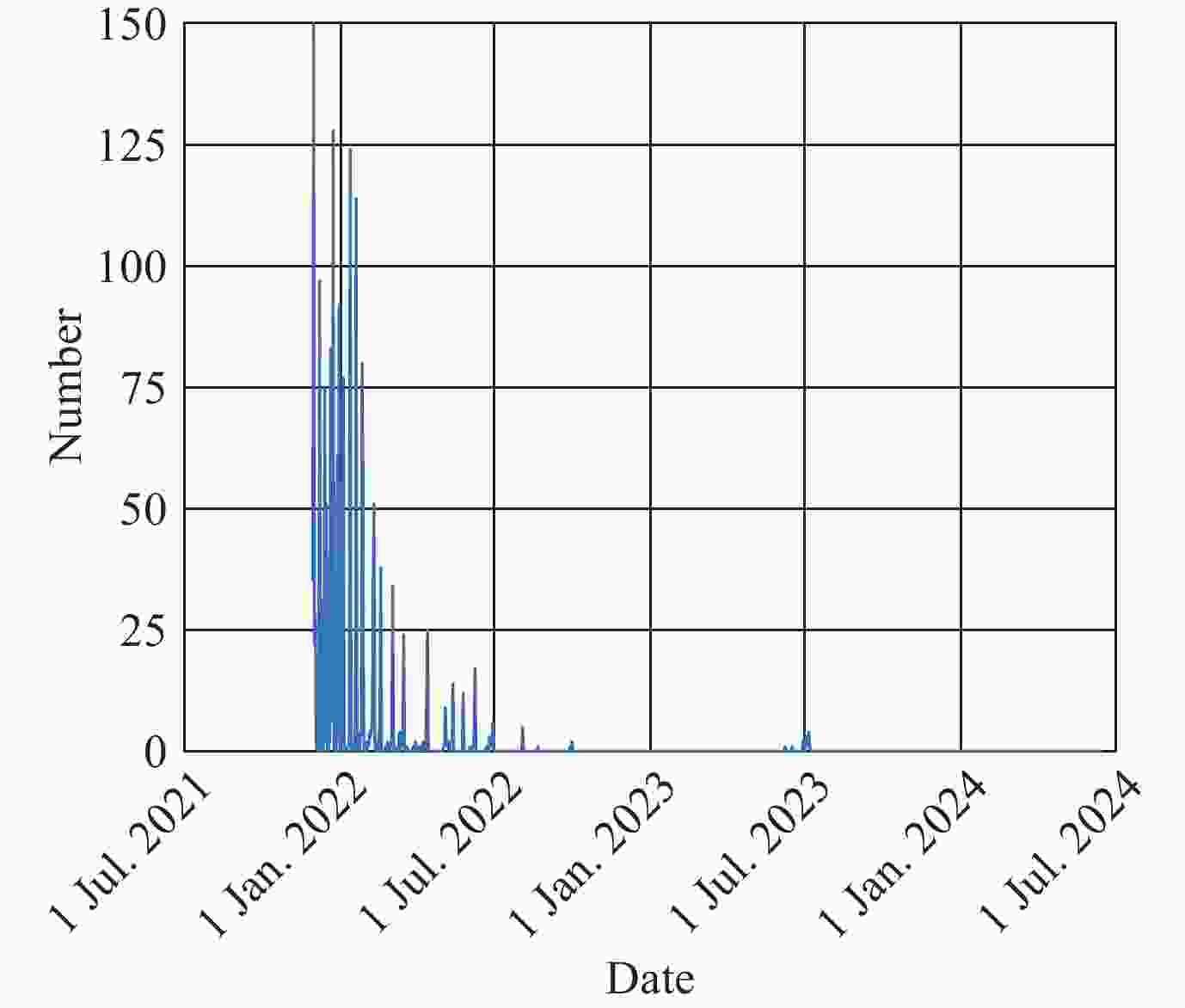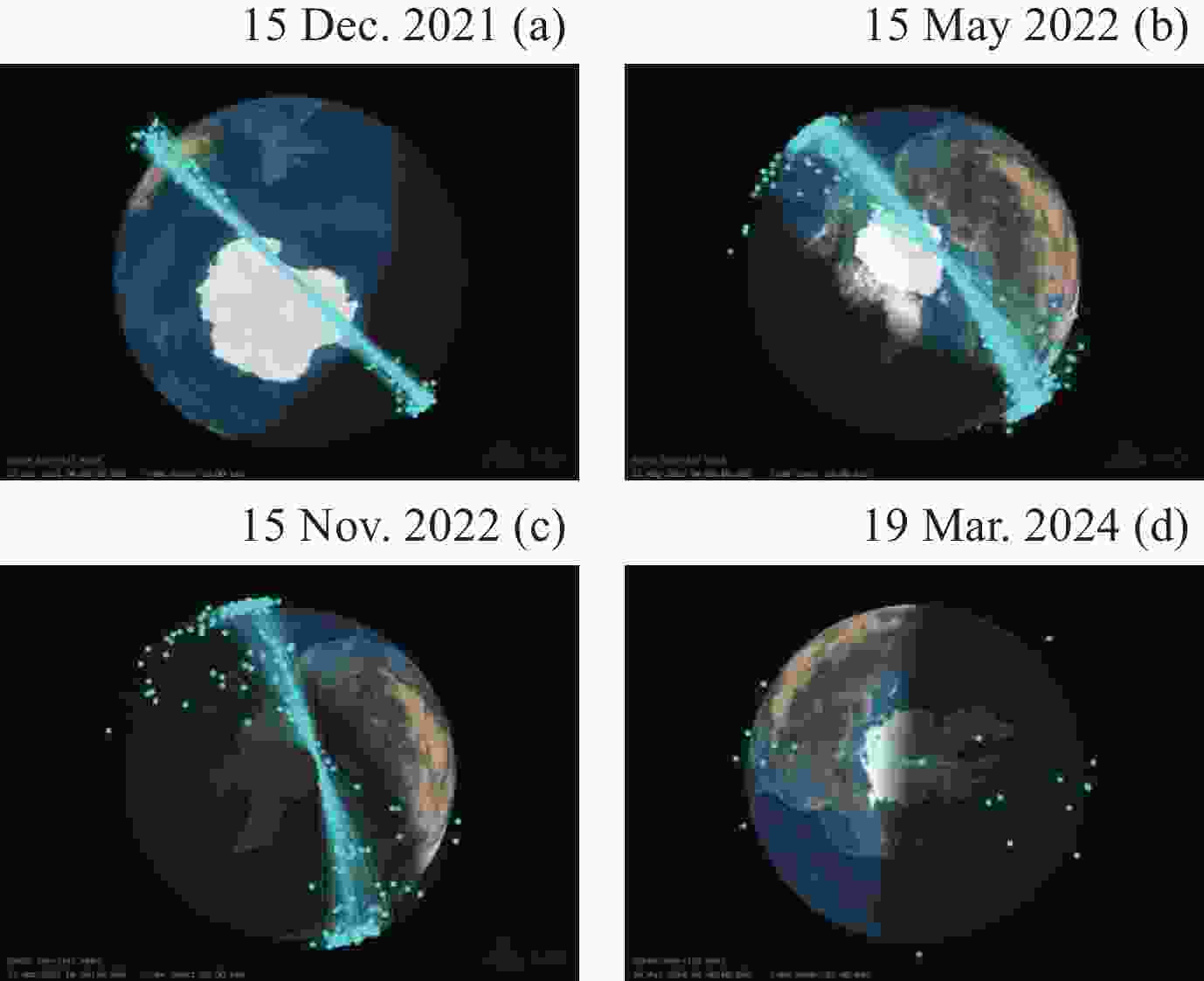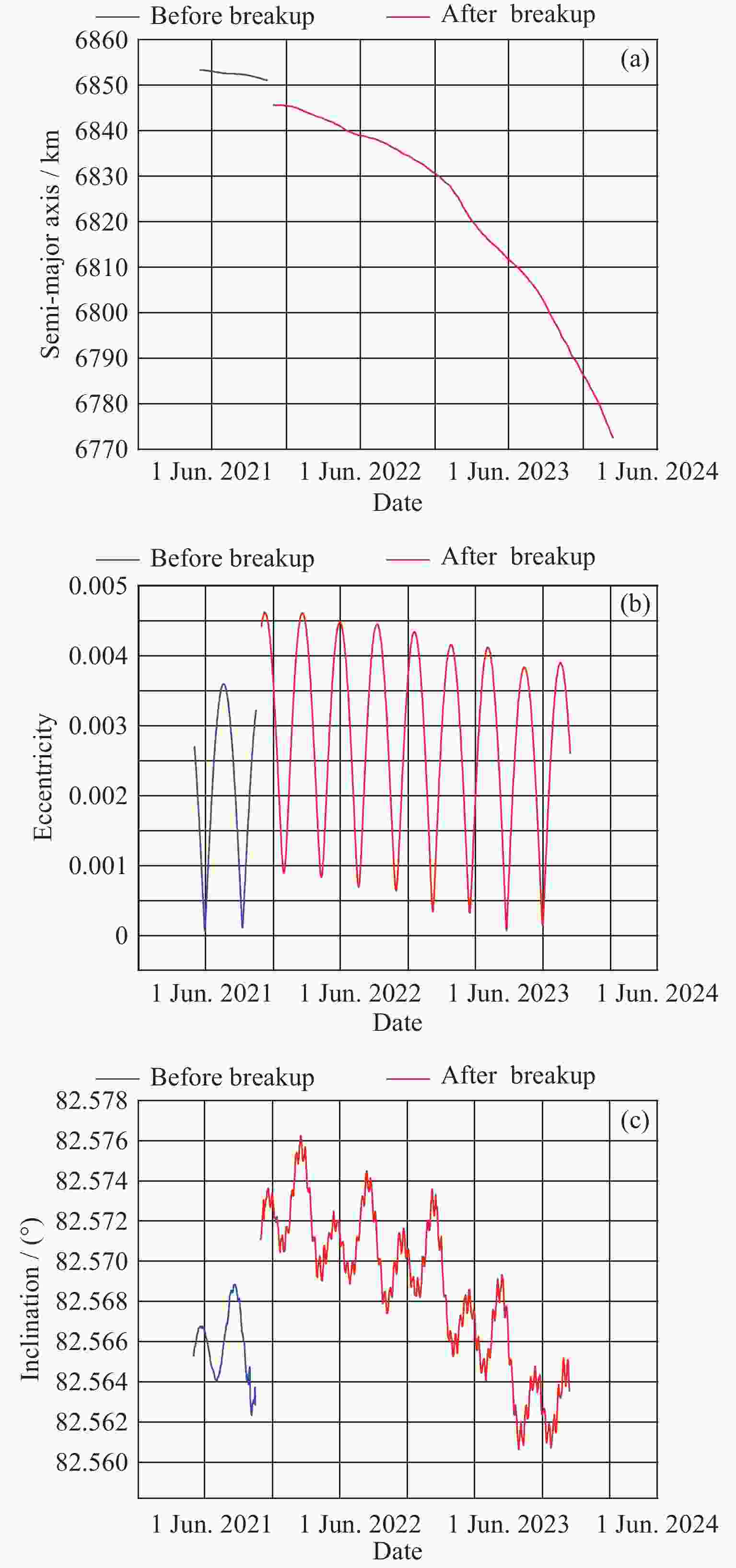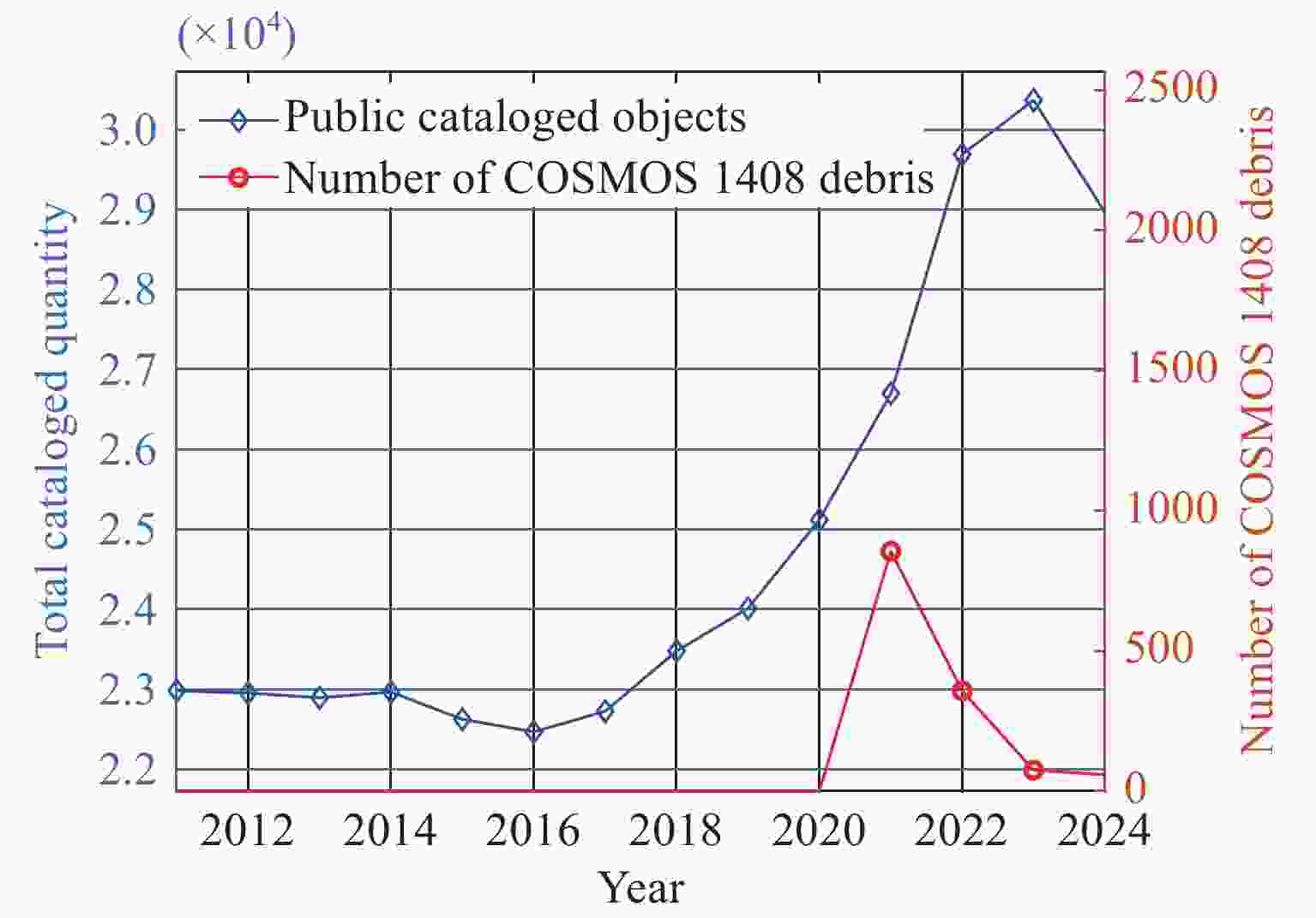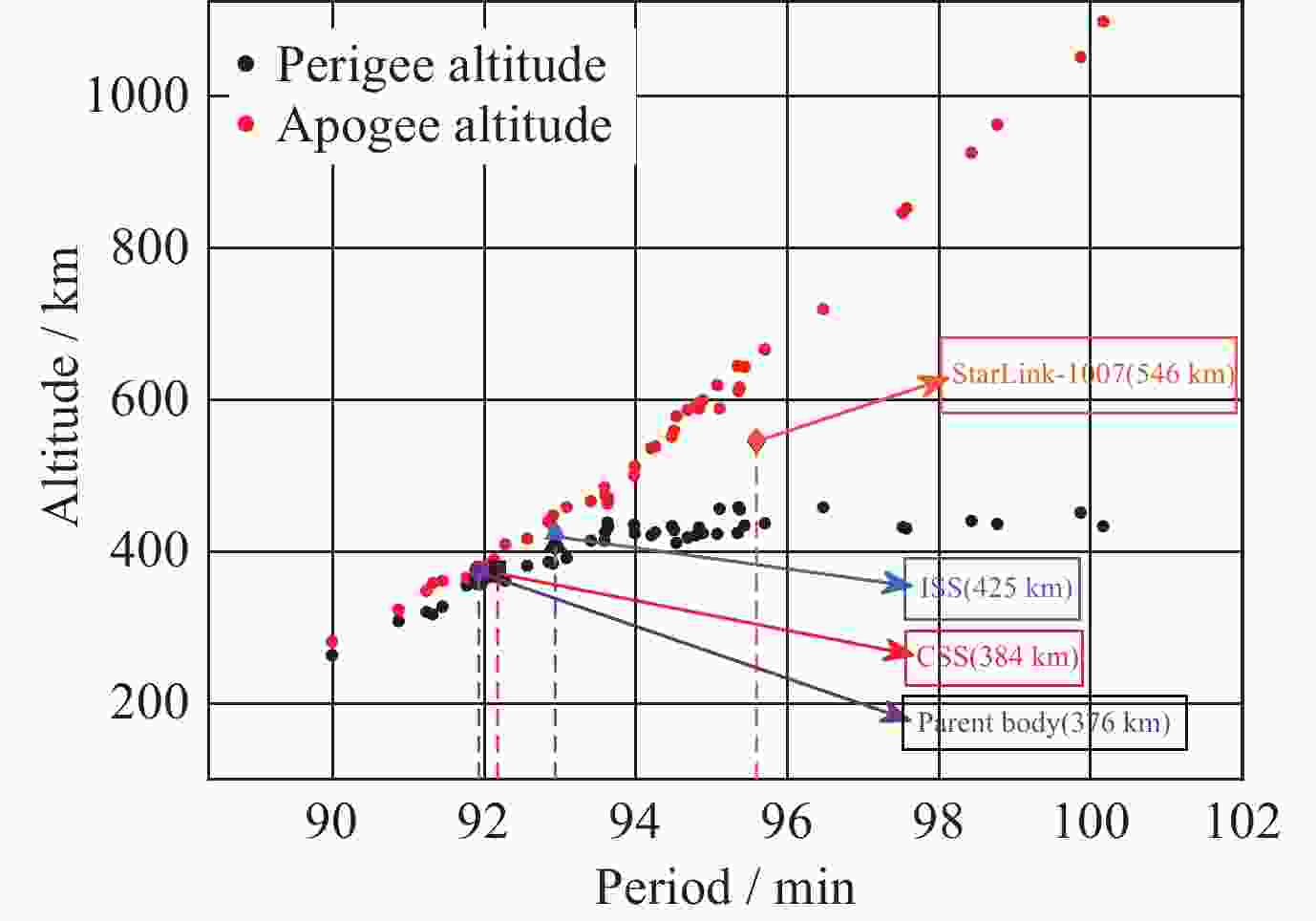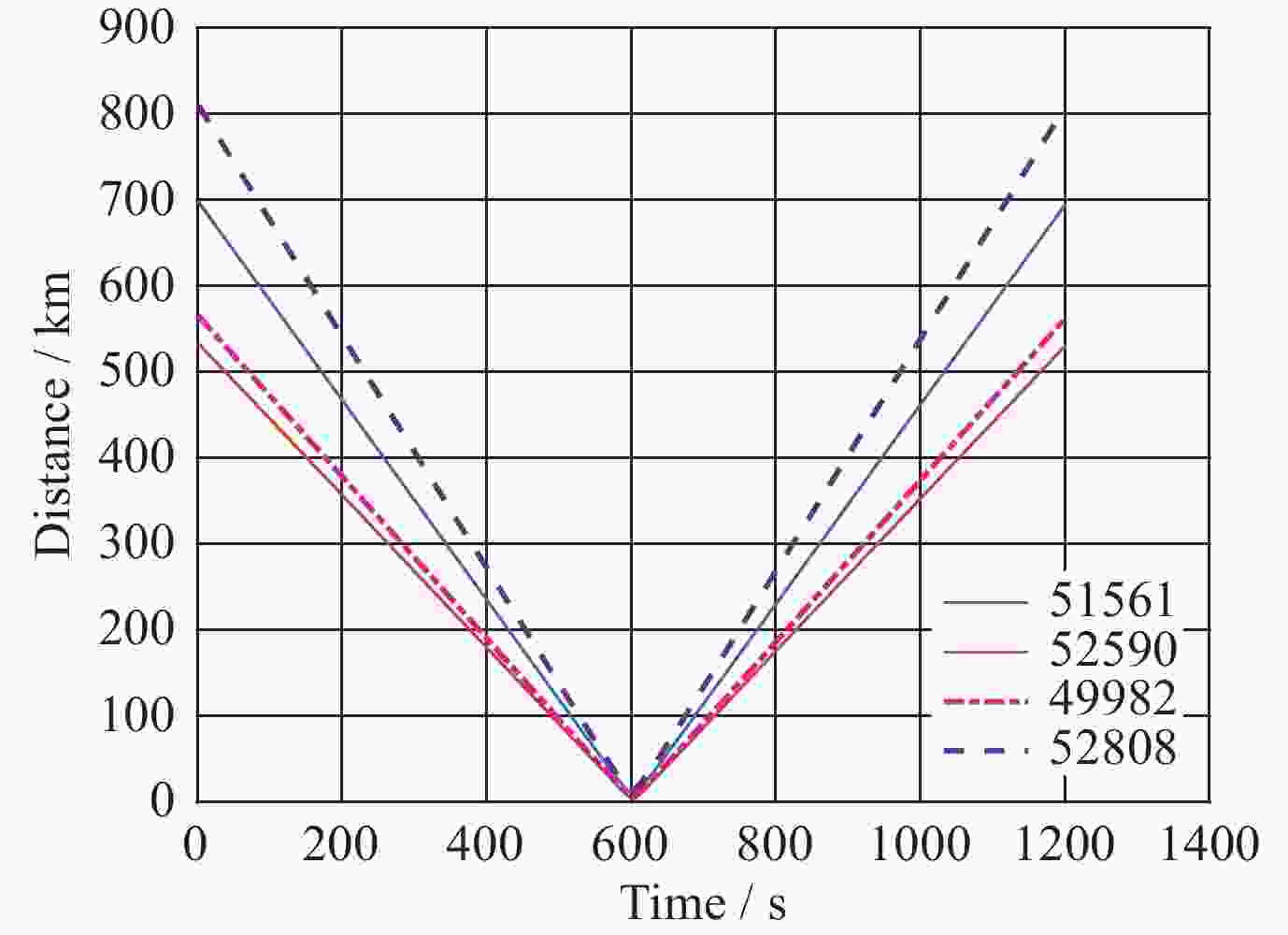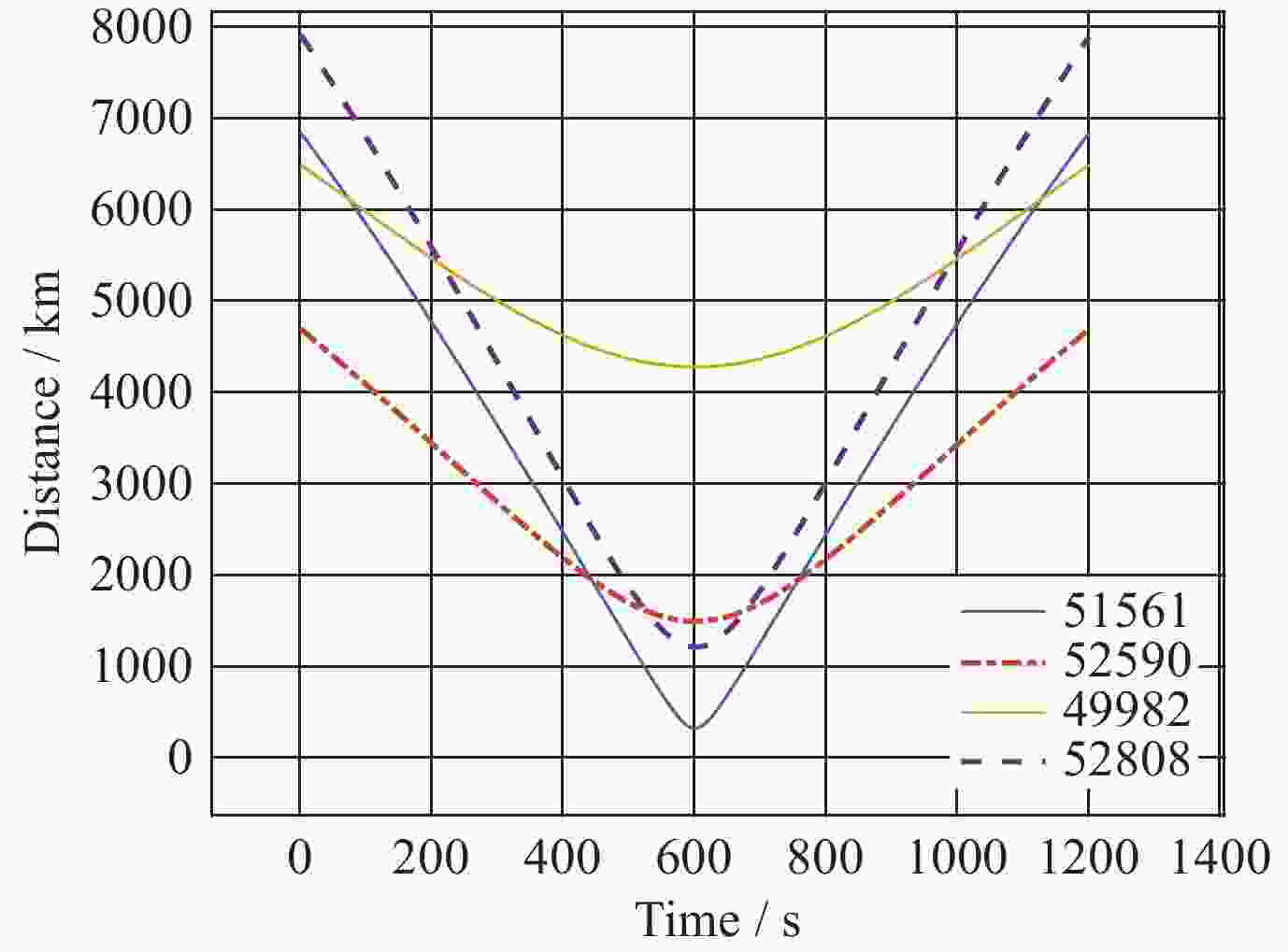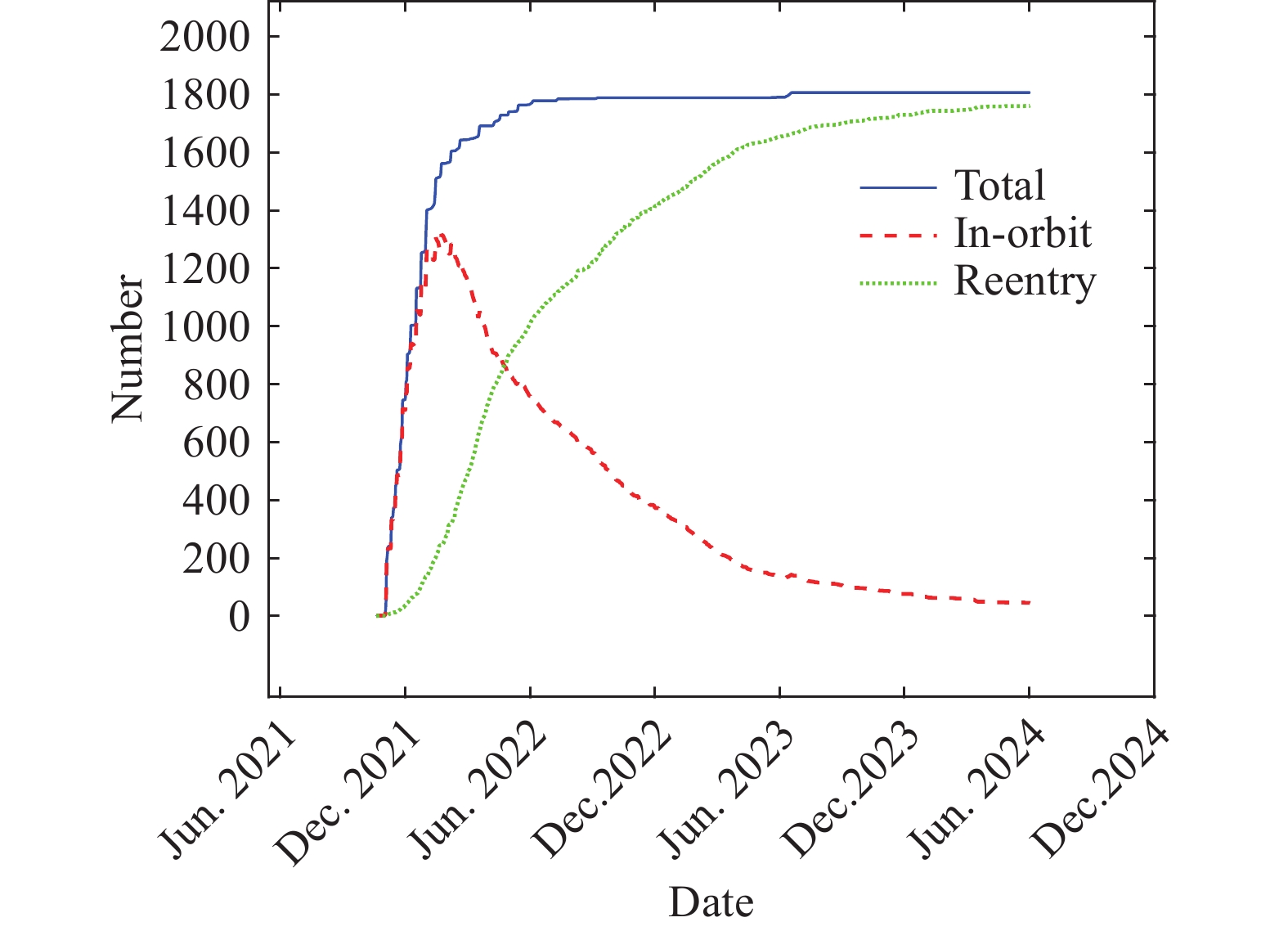Analysis of COSMOS 1408 Debris Cloud Evolution
-
摘要: 地球轨道的航天器越来越多, 近地空间密度不断增大. 据统计, 现有空间碎片主要来源于约640次的解体事件. 研究卫星解体事件对维持空间环境安全具有重要意义. 2021年11月15日, 俄罗斯进行了一次反卫星试验, 摧毁了一颗报废卫星——COSMOS 1408卫星. 事件产生了一片由约1800个可跟踪碎片组成的碎片云, 碎片云分布于200~1400 km高度区间, 随时间扩散演化, 对低地球轨道(Low Earth Orbit, LEO)卫星运行构成威胁. 本文基于美国空间监视网(Space Surveillance Network, SSN)发布的关于COSMOS 1408解体事件碎片的两行轨道根数(Two Line Element, TLE), 利用简化广义摄动模型第四版(Simplified General Perturbations 4, SGP4)模型对该碎片云进行演化分析, 主要包括碎片云的编目数量和时空变化、主要轨道参数变化、解体碎片对空间环境的影响, 并以事件碎片导致的国际空间站(International Space Station, ISS)四次机动规避碎片事件为例, 探究其演化规律以及带来的影响, 初步还原了COSMOS 1408反卫星事件碎片云的演化过程以及造成的影响.Abstract: The number of spacecrafts in Earth orbit continues to increase, leading to growing density in near-Earth space. Statistics show that existing space debris primarily originates from approximately 640 breakup events. Studying satellite breakup events is crucial for maintaining space environment safety. On 15 November 2021, Russia conducted an anti-satellite test, destroying a defunct satellite — COSMOS 1408. The event generated a debris cloud consisting of approximately 1800 trackable debris distributed across altitudes ranging from 200 km to 1400 km, which disperses and evolves over time, posing threats to Low Earth Orbit (LEO) satellite operations. Based on the Two-Line Element (TLE) data of COSMOS 1408 breakup event debris released by the U.S. Space Surveillance Network (SSN), this paper utilizes the Simplified General Perturbations 4 (SGP4) model to analyze the evolution of the debris cloud. The analysis primarily covers the cataloged quantity and spatiotemporal changes of the debris cloud, variations in main orbital parameters, and the impact of breakup debris on the space environment. Taking the International Space Station’s (ISS) four debris avoidance maneuvers as examples, this study investigates the evolution patterns and resulting impacts, preliminarily reconstructing the evolution process of the COSMOS 1408 anti-satellite event debris cloud and its consequences.
-
Key words:
- Space debris cloud /
- Satellite breakup /
- Debris distribution /
- Environmental impact /
- Maneuver avoidance
-
表 1 母体解体前后轨道参数变化
Table 1. Orbital elements variations of the parent body before and after the breakup event
年-月-日 a/m e i/(°) 2021-11-15 6851122.7 0.003 82.563 2021-11-29 6845709.0 0.004 82.571 差值 –5413.7 0.001 0.008 表 2 ISS, CSS, StarLink-1007, COSMOS 1408的基本信息
Table 2. Basic information of ISS, CSS, StarLink-1007 and COSMOS 1408
名称 国际代号 周期/min 倾角/(°) 远地点高度/km 近地点高度/km COSMOS-1408 1982-092 A 91.92 82.56 376 362 ISS (ZARYA) 1998-067 A 92.93 51.64 425 411 CSS (TIANHE-1) 2021-035 A 92.17 41.47 384 378 STARLINK-1007 2019-074 A 95.59 53.05 548 546 表 3 ISS机动规避COSMOS 1408碎片的4次历史事件
Table 3. Four historical events of ISS maneuvering to avoid COSMOS 1408 debris
NORAD ID 机动时间 (UTC) 52590 2022年6月16日 (估计) 51561 2022年10月24日 19:25 49982 2023年3月14日 11:54 52808 2023年8月6日 02:03 表 4 基于机动前TLE 计算的ISS与COSMOS 1408碎片距离
Table 4. Distance between ISS and COSMOS 1408 debris based on pre-maneuver TLE
NORAD ID 机动时间 (UTC) TCA (UTC) 接近距离/km 机动前TLE 机动后TLE 52590 2022年6月16日 00:00 2022年6月17日 09:50:40 4.178 6812.028 51561 2022年10月24日 19:25 2022年10月25日 10:10:36 11.589 6184.815 49982 2023年3月14 日 11:54 2023年3月15日 13:53:01 7.078 8354.855 52808 2023年8月6日 02:03 2023年8月6日 18:11:07 16.744 8941.203 -
[1] TANG Jingshi, CHENG Haowen. The origin, status and future of space debris[J]. Physics, 2021, 50(5): 317-323. DOI: 10.7693/wl20210505 (汤靖师, 程昊文. 空间碎片问题的起源、现状和发展[J]. 物理, 2021, 50(5): 317-323. DOI: 10.7693/wl20210505) [2] MUCIACCIA A, FACCHINI L, MONTARULI M F, et al. Radar observation and recontruction of Cosmos 1408 fragmentation[J]. Journal of Space Safety Engineering, 2024, 11(1): 143-149 doi: 10.1016/j.jsse.2023.11.006 [3] ANZ-MEADOR P, OPIELA J, LIOU J C. History of on orbit satellite fragmentation, 16th Edition[R]. Houston: Johnson Space Center, 2022 [4] 庞宝君, 王东方, 肖伟科, 等. 美国DMSP-F13卫星解体事件对空间碎片环境影响分析[J]. 航天器环境工程, 2015, 32(4): 349-356 doi: 10.3969/j.issn.1673-1379.2015.04.002PANG Baojun, WANG Dongfang, XIAO Weike, et al. The influence of US satellite DMSP-F13 breakup event on space debris environment[J]. Spacecraft Environment Engineering, 2015, 32(4): 349-356 doi: 10.3969/j.issn.1673-1379.2015.04.002 [5] 刁宁辉, 刘建强, 孙从容, 等. 基于SGP4模型的卫星轨道计算[J]. 遥感信息, 2012, 27(4): 64-70 doi: 10.3969/j.issn.1000-3177.2012.04.011DIAO Ninghui, LIU Jianqiang, SUN Congrong, et al. Satellite orbit calculation based on SGP4 model[J]. Remote Sensing Information, 2012, 27(4): 64-70 doi: 10.3969/j.issn.1000-3177.2012.04.011 [6] HE C Y, LI W, HW AD, et al. Thermospheric mass density modelling during geomagnetic quiet and weakly disturbed time[J]. Atmosphere, 2024, 15(1): 72 doi: 10.3390/atmos15010072 [7] 龚自正, 赵秋艳, 李明, 等. 空间碎片防护研究前沿问题与展望[J]. 空间碎片研究, 2019, 19(3): 2-13GONG Zizheng, ZHAO Qiuyan, LI Ming, et al. The frontier problem and prospect of space debris protection research[J]. Space Debris Research, 2019, 19(3): 2-13 [8] 李明, 龚自正, 刘国青. 空间碎片监测移除前沿技术与系统发展[J]. 科学通报, 2018, 63(25): 2570-2591 doi: 10.1360/N972017-00880LI Ming, GONG Zizheng, LIU Guoqing. Frontier technology and system development of space debris surveillance and active removal[J]. Chinese Science Bulletin, 2018, 63(25): 2570-2591 doi: 10.1360/N972017-00880 [9] PASTOR A, SIMINSKI J, ESCRIBANO G, et al. Early cataloguing of fragments from break-up events[J]. Advances in Space Research, 2023, 71(10): 4222-4238 doi: 10.1016/j.asr.2023.02.016 [10] PALMER C. Russian anti-satellite test spotlights space debris danger[J]. Engineering, 2022, 12(5): 3-5 [11] NASA International space station maneuvers to avoid Russian ASAT fragment[J]. Orbital Debris Quarterly News, 2022, 26(3): 2-4 [12] OLIVIERI L, GIACOMUZZO C, LOPRESTI S, et al. Simulation of in-space fragmentation events[J]. Aerotecnica Missili :Times New Roman;">& Spazio, 2024, 103(3): 225-232 [13] LIU Y Y, CHI R Q, HU D Q, et al. The consequences of Cosmos 1408 breakup: the optimization of the breakup model and the influence of debris clouds[J]. Acta Astronautica, 2023, 206: 156-167 doi: 10.1016/j.actaastro.2023.02.023 [14] 赵广宇, 桑吉章, 陈俊宇, 等. 利用稀疏角度数据改进空间目标TLE轨道预报精度[J]. 测绘地理信息, 2021, 46(S1): 301-304 doi: 10.14188/j.2095-6045.2019214ZHAO Guangyu, SANG Jizhang, CHEN Junyu, et al. Improving the orbit prediction accuracy for NORAD objects using sparse angles data[J]. Journal of Geomatics, 2021, 46(S1): 301-304 doi: 10.14188/j.2095-6045.2019214 [15] WANG R L, FENG S, YANG X H, et al. Breakup analysis of Cosmos 1408 satellite[J]. Journal of Space Safety Engineering, 2024, 11(2): 335-341 doi: 10.1016/j.jsse.2024.02.003 [16] NASA. International space station maneuvers to avoid another Russian ASAT fragment[J]. Orbital Debris Quarterly News, 2022, 26(4): 2-8 [17] NASA. ISS maneuvers twice in a week’s span to avoid potential collisions[J]. Orbital Debris Quarterly News, 2023, 27(2): 2-8 [18] NASA. ISS maneuvers to avoid potential collisions twice in August 2023[J]. Orbital Debris Quarterly News, 2023, 27(4): 1-2 -
-





 莫星健 男, 2001年1月出生于贵州省黔南布依族苗族自治州, 山东理工大学测绘工程专业2024届本科生. 研究方向为空间态势感知. E-mail:
莫星健 男, 2001年1月出生于贵州省黔南布依族苗族自治州, 山东理工大学测绘工程专业2024届本科生. 研究方向为空间态势感知. E-mail: 
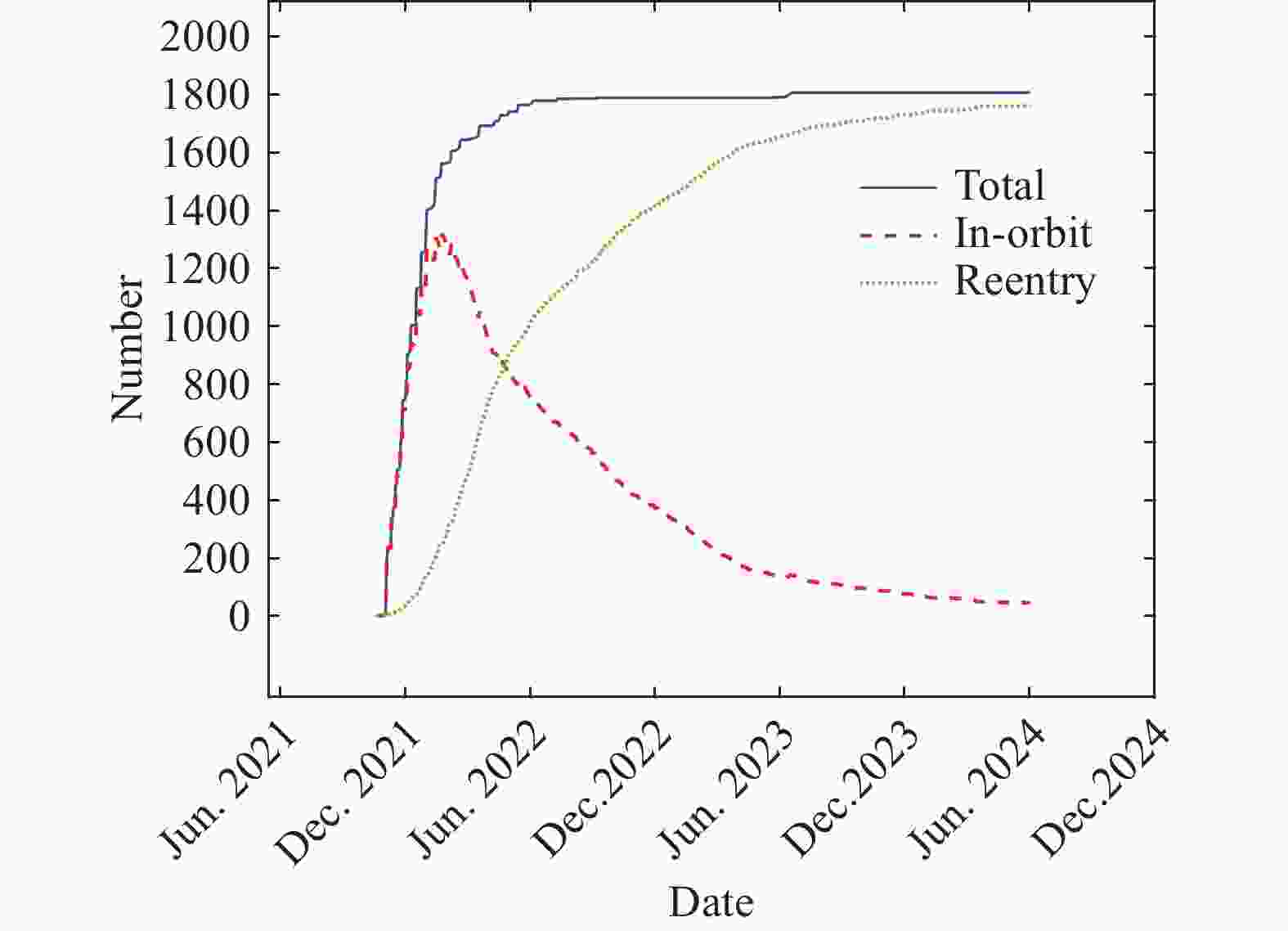
 下载:
下载:
